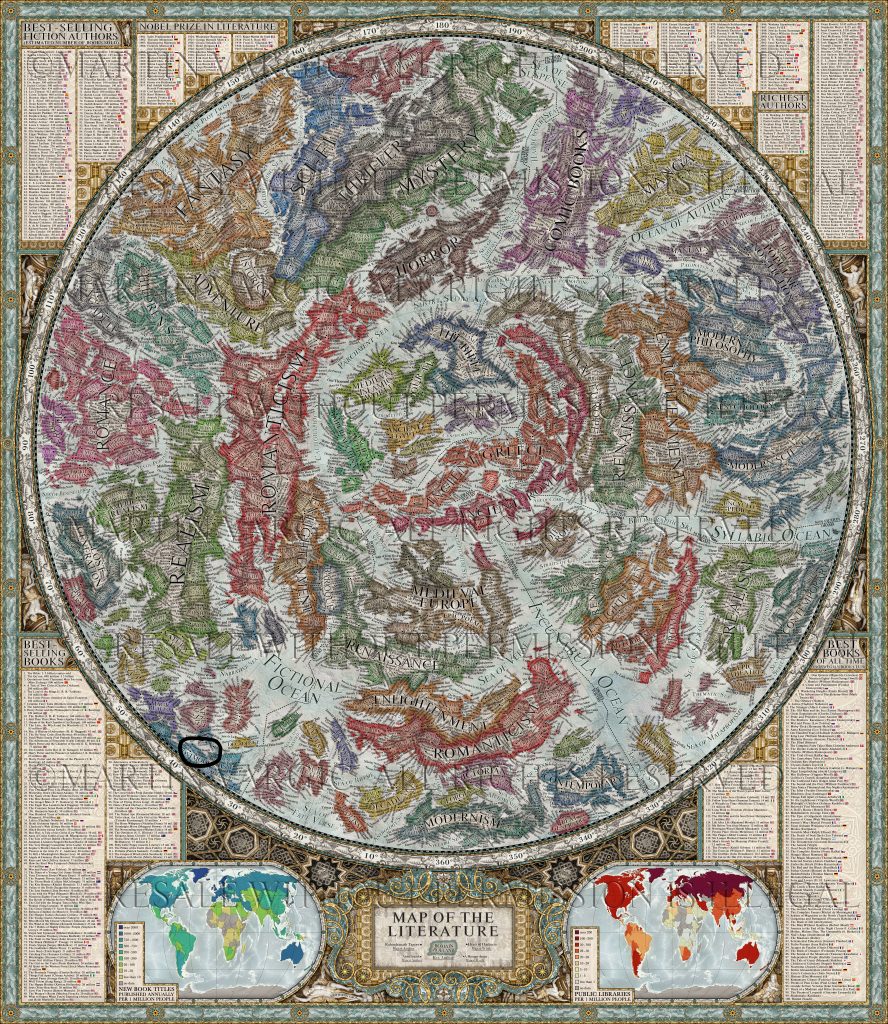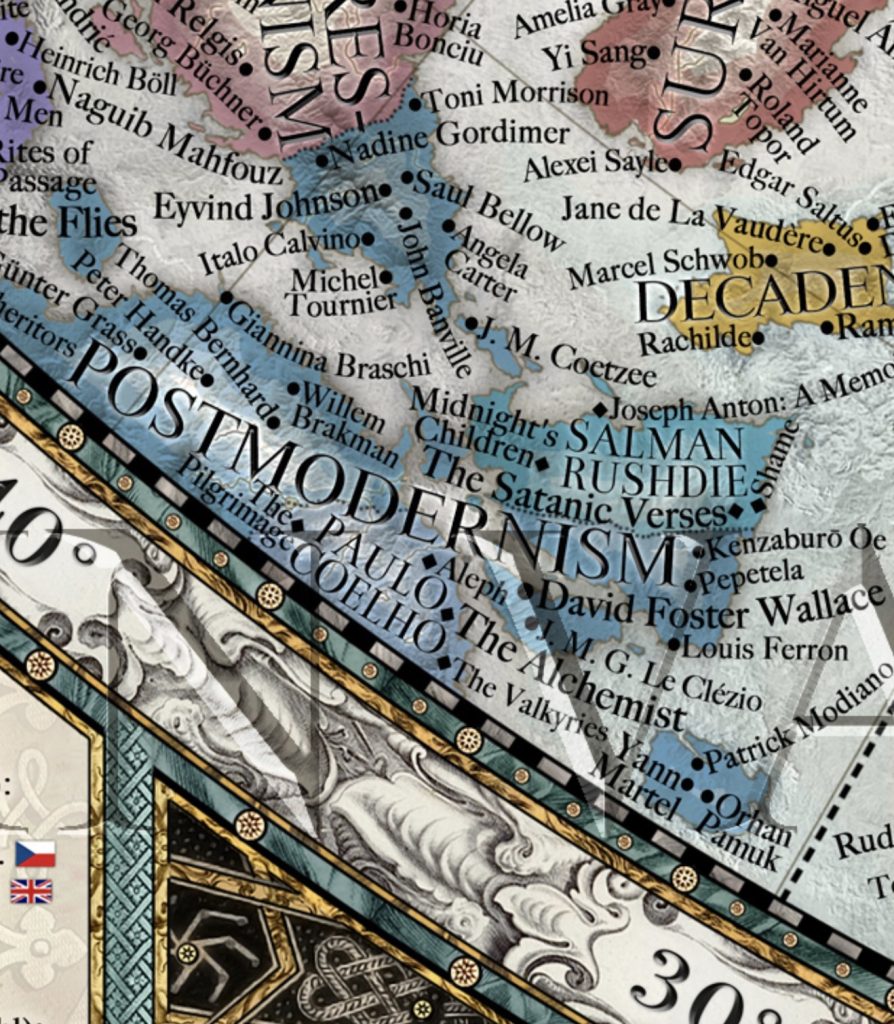Map of Literature

Map of Literary History
Latino Book Review
The Map of Literature: 5,000 Years & 7,000 Authors
There is a certain comfort in believing that literature resists cartography; that words and worlds, once written, float free, refusing to be bound by borders or coordinates. And yet, a new and ambitious work dares to challenge that assumption. This breathtaking Map of the Literature spans 5,000 years of writing, charting the vast and tangled evolution of prose, poetry, drama, and non-fiction as if they were continents, archipelagos, and nations.
The scale is extraordinary: over 7,000 authors and their most influential works are represented. Important figures such as Homer, Shakespeare, Tolstoy, García Márquez preside over their own “countries,” where their names cluster like luminous cities. What emerges is nothing less than epic—an atlas where voices and movements unfold across centuries of terrain.
At its center lie the myths and hymns of the Sumerians, Babylonians, and Egyptians, alongside the sacred texts of Judaism, Christianity, and Islam. From there, it radiates outward to the Greek “archipelago” of drama, lyric, and philosophy, then spirals into the continents of Renaissance prose, Enlightenment treatises, Romantic poetry, and the proliferating genres of the modern world.
Drama unfolds from Aeschylus to Lope de Vega, from Ibsen to Brecht. Rising like mountain ranges, Herodotus and Aristotle help form their ancient bedrock, Kant and Newton shaping the Enlightenment, Freud, Darwin, and Einstein altering the modern horizon. Even graphic novels and manga find a home here. Their testament to the lasting cultural force of comics and visual storytelling
The Latin American presence is also compelling. Magical Realism rises as its own glowing island, where Gabriel García Márquez, Jorge Luis Borges, Alejo Carpentier, Juan Rulfo, Elena Garro, Isabel Allende, and Mireya Robles stand as storytelling marvels. Octavio Paz and the Mexican American U.S. Poet Laureate, Ada Limón, command a luminous outpost in the island of contemporary poetry, while the Puerto Rican author,
Giannina Braschi, bears fruit to language in the land of postmodernism. In the darker quarters of the land of horror, Horacio Quiroga reminds us that the jungle itself can be a character—capricious, menacing, alive.
In its outer corners, the Map of the Literature offers yet another layer of fascination: carefully arranged lists that anchor the vast cultural milestones. Here, one finds the best-selling fiction authors of all time, the chronology and nationality of Nobel Prize laureates in literature, tallies of the richest authors, the perennial best-selling books, and much more. These details act like compass roses, orienting the reader not only across the centuries of storytelling but also in the metrics of fame, recognition, and cultural impact. They remind us that literature is both art and industry, shaped by acclaim as much as by imagination.The Map of the Literature is not just an object of inquiry but of beauty. Its design calls to mind the gilded atlases of the Renaissance, when cartography was as much works of art as instruments of navigation. Flourishing borders, esthetic lettering, and intricacy give this masterpiece a decorative richness that elevates it beyond mere reference. It is as capable of hanging in a study or a classroom as in a gallery or a living room. In this sense, it offers both knowledge and aesthetic: part atlas, part artwork, a visual symphony where the voices of generations, across millennia, echo through time.To gaze at it is to feel like a traveler in an infinite library. It reminds us that written word is not linear but branching, not bounded but ever-expanding. It reveals the hidden routes connecting Sumer to Steinbeck, Borges to Beckett, Paz to Plato.
Halcyon Map of Literature

For readers, writers, and scholars alike, this mappa mundi is more than decoration—it is a must-have for any bibliophile. A single poster, yes, but also a reminder that the landscape of human imagination is vast, and we are all
September 21, 2025
LATINO BOOK REVIEW
Gerald A. Padilla is a publisher, translator, educator, and cultural promoter. He is the founder and Editor-in-Chief of Latino Book Review, the founder of Jade Publishing, and the co-founder of Centro Latir. He is a two-time judge for the Scholastic Writing Awards held at Carnegie Hall in NYC. He is the recipient of the Spirit of MLK Exemplary Award from Texas A&M University-Corpus Christi for championing Latinx art, literature, and culture.Comments
Key words: map of literature, literary map, Halcyon Map of Literature, Latin American literature on the map
